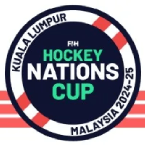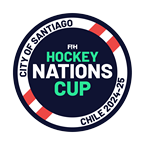
While the best senior teams in the world will be eyeing the Rio Olympic Games as their big target this year, the next generation of hockey stars will have their own moment in the spotlight at the end of the year when the Junior Hockey World Cups get under way.
Over the next few months the last continental qualifiers will be played to decide who will be competing at this showcase junior event, the women's taking place in Santiago, Chile from 24 November to 4 December and the men's in India from 1-11 December.
The Men’s Junior World Cup came into being in 1979, with the women’s event started 10 years later in 1989. From 1985 it has been played every four years.
Germany is the most successful men’s team with six titles to its name, while the Netherlands women have won the title three times, with Korea women winning the title twice.
So far, Europe, Oceania and Asia have played their continental qualifiers, with the Pan American women’s event taking place in March and the men’s event in June. The Africa Junior Cup for Nations will also be taking place in March.
The European qualifying event took place back in 2014 in Waterloo, Belgium, with Netherlands, Germany, England, Belgium, Spain and Austria qualifying on the men’s side and Netherlands, Germany, England, Spain, Belgium and France qualifying from the women’s competition.
It was a two-horse race between Australia and New Zealand in the Oceania qualifier, which took place in January in the Gold Coast, Australia.
Both teams qualified but the young Australian teams have the bragging rights. The men completed a hat-trick of victories, beating their Black Sticks rivals 3-0, 5-1 and 2-1. Two names for the future are penalty corner specialist Frazer Gerrard and lively forward Max Hendry, who scored a hat-trick of field goals in the 5-1 victory and finished the competition’s top scorer.
The women’s team also won all three games, although these were close encounters, with Australia's Jillaroos winning 2-1, 3-2 and a more comfortable 4-1. Madison Ratcliffe of Australia finished the competition as top scorer.
It was India all the way in the Men’s Junior Asia Hockey Cup as they defeated Pakistan 6-2 in an exhilarating display of attacking hockey at the Wisma Belia Hockey Stadium in Kuantan, Malaysia.
In the eighth edition of this tournament, man of the moment was Harmanpreet Singh, who scored four penalty corners, three of them in the first half of the match.
The bronze medal went to Korea after they beat Japan in a cagey 2-1 match. The prize for the teams finishing in the top four places – India, Pakistan, Korea and Japan – is automatic qualification for the Men’s Junior World Cup.
In the women’s Junior Asia Cup held in Changzhou, China - China, Japan and Korea all qualified, with India losing out to Korea in the bronze medal match. China beat Japan in a tense final that went to shoot-out.
Who will be representing the Pan American region will be decided through two events: from 29 March to 10 April the women’s event will get under way in Trinidad and Tobago, while from May 20-28, the men are off to Toronto in Canada.
Eleven women’s teams and eight men’s teams will be competing at this year’s Junior Pan American Championships and with the Rio Olympics taking place on the continent just a few weeks later, there is bound to be a certain buzz around the matches as the teams battle to qualify for the Junior World Cup.
The Junior Pan American Championships started in 1978 for the men, with the women’s event commencing 10 years later. In that time, it has been an almost total Argentinian domination. The men have won every edition of the tournament, the women have been beaten only once, by the USA in 2008.
Final confirmation of Junior World Cup qualifiers will be announced in June. Check the FIH website for further details, including details about the Junior Hockey World Cups.
Junior Hockey World Cup composition
Men's (TBC, India)
| Continent | Teams |
| Africa | 2 |
| Asia | 4 |
| Europe | 6 |
| Oceania | 2 |
| Pan America | 2 |
| Total Teams | 16 |
Women's (Santiago, Chile)
| Continent | Teams |
| Africa | 2 |
| Asia | 3 |
| Europe | 6 |
| Oceania | 2 |
| Pan America | 3 |
| Total Teams | 16 |























